Q
how to connect bluetooth to ford ranger
To pair your Bluetooth with a Ford Ranger, first make sure the truck is parked and the ignition is on. Then fire up the SYNC system on the center console, head into the "Settings" menu, and pick "Bluetooth." While that's going, turn on your phone's Bluetooth and scan for "Ford Ranger" in the device list. When pairing, a code'll pop up on the screen—just make sure it matches the one on your phone, and you're golden. Once connected, you can blast music or take calls right through the truck's system. The Ranger's SYNC setup also hooks you up with voice control, so you can just say things like "Play music" or "Call John" to handle your Bluetooth devices. It’s a total game-changer for keeping your hands on the wheel and eyes on the road. Plus, SYNC plays nice with both iOS and Android, so most folks should have no trouble linking up. If you run into issues, try restarting SYNC or your phone's Bluetooth. And if all else fails, check the owner’s manual or hit up Ford Malaysia’s customer support for extra help. Bluetooth connectivity isn’t just a convenience for daily driving—it also cuts down on distracted phone use, making it a must-have feature in modern vehicles.
Special Disclaimer: This content is published by users and does not represent the views or position of PCauto.
Related Q&A
Q
What Segment is Ford Ranger?
The Ford Ranger falls into the mid-size Pickup truck segment in the Malaysian market. It competes at the same level as models like the Toyota Hilux and Mitsubishi Triton. These types of vehicles are extremely popular in Malaysia, especially suitable for commercial use and off - road needs. The Ranger is well - known for its sturdy body structure, strong loading and towing capabilities, and advanced four - wheel drive system. It also offers a variety of powertrain options, including efficient diesel engines, which are suitable for the diverse local road conditions and usage scenarios.
The popularity of mid - size pickups in Malaysia is not only due to their high practicality but also benefits from low import taxes and policy support, making these models more cost - effective. Moreover, as consumers' demands for comfort and technological features increase, the new - generation Ranger is also equipped with more intelligent driving assistance systems and modern interiors, further blurring the line between commercial and passenger use, and becoming a multi - functional choice for both families and businesses.
Q
What is the Reslae Value of Ford Ranger?
The Ford Ranger has an above-average price in the Malaysian used car market. It is mainly influenced by factors such as the vehicle's age, mileage, maintenance condition, and market demand. Generally, a 3 - year - old Ranger can retain about 60 - 65% of its original price, while a 5 - year - old one retains around 50%. Specifically, its performance is better than some competing models in the same class but slightly lags behind Japanese competitors.
The high resale value of the Ranger is due to its sturdy body structure, reliable powertrain, and its popularity in the Malaysian pickup truck market. In particular, its diesel - engine version is highly favored by commercial and leisure users for its low fuel consumption and strong torque.
The pickup truck market in Malaysia is highly competitive. When considering used cars, consumers should pay attention to regular maintenance records and the status of the original factory warranty. A good maintenance history can significantly increase the resale value. At the same time, it is recommended to refer to the real - time quotes on used car platforms such as Carlist or Mudah. Also, note that four - wheel - drive versions are usually more valuable than two - wheel - drive versions in high - demand areas like East Malaysia.
Q
How Many CC is Ford Ranger?
The engine displacement of the Ford Ranger varies depending on the specific model and year. Currently, the versions available in the Malaysian market are mainly equipped with a 2.0-liter turbocharged diesel engine with a displacement of 1,996cc. In some overseas markets, options like a 3.0-liter V6 turbocharged diesel engine (displacement 2,967cc) are also offered. For Malaysian consumers, the Ranger's 2.0-liter diesel engine strikes a good balance between power and fuel economy, making it suitable for the diverse local driving environments. It can handle both city commuting and light off - roading.
Displacement (CC) is a unit that measures the volume of an engine's cylinders, which directly affects power output and fuel consumption. However, the actual driving experience also needs to be comprehensively evaluated in combination with factors such as turbocharging technology and gearbox tuning. As a popular pickup truck in the Southeast Asian market, the engine configuration of the Ranger fully takes into account the requirements of the tropical climate and complex road conditions. It is recommended to test - drive the vehicle at an authorized dealer before purchasing to experience its actual performance.
Q
What is the Engine in Ford Ranger?
The Ford Ranger offers a variety of engine options in the Malaysian market to meet the diverse needs of different users, including efficient diesel and gasoline engines. Among them, the 2.0-liter EcoBlue twin-turbo diesel engine is the most popular version, which can deliver 213 horsepower and 500 Nm of torque. Paired with a 10-speed automatic transmission, it's suitable for heavy loads and off-road requirements. There's also a 3.2-liter Duratorq five-cylinder diesel engine available, with a maximum power of 200 horsepower and 470 Nm of torque, which suits users seeking stronger power. In some markets, a 2.3-liter EcoBoost gasoline engine is also offered, catering to drivers who prefer gasoline power.
The engine technology of the Ford Ranger focuses on fuel economy and low emissions, complying with Malaysia's environmental standards. Meanwhile, its robust and durable design is suitable for the diverse local road conditions, capable of handling both urban commuting and long-distance transportation.
In addition, the engine maintenance of the Ford Ranger is relatively simple. The local dealer network is well - established, and the parts supply is abundant, which reduces the long - term maintenance costs. For Malaysian users, it's a reliable and practical choice.
Q
What is the Gearbox Type of Ford Ranger?
The transmission types offered by the Ford Ranger in the Malaysian market mainly vary according to the vehicle models and engine configurations. Currently, the transmissions it comes with include a 6 - speed manual transmission (6MT) and a 10 - speed automatic transmission (10AT). Among them, the 10AT is an efficient choice paired with the 2.0 - liter EcoBlue twin - turbo diesel engine, offering a smoother shifting experience and optimized fuel economy. The 6MT is commonly found in entry - level models and is suitable for drivers who prefer a sense of control.
The choice of transmission technology reflects Ford's consideration of diverse driving needs. For example, the 10AT enhances the power response during high - speed cruising and off - road driving through a more closely - spaced gear ratio design, while the manual transmission retains the driving pleasure and ease of maintenance. Malaysian users can choose the appropriate configuration according to their daily usage (such as city commuting or long - distance off - road driving). At the same time, it is recommended to regularly maintain the transmission fluid to ensure long - term durability. These details are especially important in a tropical climate.
Other brands like the Toyota Hilux and Mitsubishi Triton also offer similar transmission options, but the specific performance can only be judged through test drives for comparison.
Q
What is the PCD Size of Ford Ranger?
The PCD (Pitch Circle Diameter) of the Ford Ranger is 6x139.7 mm. This means that its wheels have 6 bolt holes evenly distributed on a circle with a diameter of 139.7 mm. This specification is compatible with many pickups and SUV models, which makes it convenient for owners to replace or upgrade their wheels. In Malaysia, it's particularly important for modification enthusiasts to know the PCD size. Only by choosing the correct PCD can you ensure that the wheels perfectly match the vehicle's hubs, avoiding vibrations or safety hazards during driving.
Moreover, PCD is just one of the wheel parameters. When modifying, you also need to pay attention to data such as the center bore diameter (CB), offset (ET), and load index. It is recommended that owners consult professional technicians or refer to the original factory manual before modification to ensure compliance and safety.
As a popular pickup in the Malaysian market, the Ford Ranger is well - loved by users for its solid chassis and strong load - carrying capacity. Appropriate wheel modification can not only enhance the appearance but also optimize the performance. However, make sure to choose accessories that meet the specifications.
Q
Does Ford Ranger Have Apple Carplay?
Yes, the latest models of the Ford Ranger in the Malaysian market are indeed equipped with Apple CarPlay. This system is accessible through the touchscreen on the center console, allowing users to seamlessly connect their iPhones and use apps such as navigation, music, and calls, which enhances driving convenience and the entertainment experience. Besides Apple CarPlay, the Ford Ranger also supports Android Auto to meet the needs of different smartphone users. Meanwhile, some high - end models may also feature a more advanced SYNC infotainment system, which offers extended functions like voice control and in - car Wi - Fi. For Malaysian consumers, these technological features are very useful during daily commutes or long - distance trips. In particular, combined with the Ranger's outstanding off - road performance and practicality, it has become a popular choice in the pickup truck market. It should be noted that the specific features may vary depending on the model year and configuration. It is recommended to confirm detailed information with the dealer before purchasing to ensure it meets your personal needs.
Q
What is the Tyre Brand of Ford Ranger?
The original - equipped tire brands of the Ford Ranger in the Malaysian market may vary depending on the model year and configuration. Common combinations include well - known international brands such as Michelin, Bridgestone, or Goodyear. These brands are renowned for their wear resistance and all - terrain adaptability, which are especially suitable for the multi - purpose needs of pickups like the Ranger.
When Malaysian owners choose to replace their tires, they can refer to the original factory specifications (such as 265/65R17 or 265/60R18) and take local road conditions into account. For example, during the rainy season on slippery roads or on unpaved rural roads, it is recommended to prioritize tires with an M + S (Mud and Snow) marking or AT (All - Terrain) tread patterns to enhance safety.
In addition, regularly checking tire pressure and wear is the key to extending tire life. If you often drive on gravel roads, you can appropriately lower the tire pressure to increase the contact area. It should be noted that there are subtle differences in noise reduction, fuel consumption performance, and grip among tires of different brands. It is advisable to obtain the appropriate tire models through official dealers to ensure the vehicle's performance matching.
Q
Is Ford Ranger a Good Car? Learn the Pros and Cons Here
The Ford Ranger is a highly - regarded Pickup truck model in the Malaysian market. Its advantages lie in its powerful off - road performance, robust body structure, and high load - carrying capacity, making it suitable for users who need to balance work and leisure. The turbocharged diesel engine it is equipped with provides abundant low - end torque output. Coupled with an advanced four - wheel drive system, it can easily handle various complex road conditions, especially suitable for Malaysia's environment with many rainforests and rural roads.
In terms of the interior, the Ranger emphasizes the combination of practicality and a sense of technology. It is equipped with modern features such as the SYNC infotainment system, which enhances the driving experience. However, its fuel consumption performance may be slightly higher compared to models in the same class, and due to its relatively large body size, it can be a bit inconvenient to manoeuvre on narrow city streets.
For Malaysian consumers, if they often need to travel long distances or have high cargo - carrying requirements, the Ranger is a reliable choice. But if its main use is for city commuting, they need to weigh its size and fuel consumption. In addition, Ford has a relatively comprehensive after - sales service network in Malaysia, and maintenance is relatively convenient, which is also a factor worth considering.
Q
What is the Width of Ford Ranger?
The body width of the Ford Ranger varies slightly depending on different models and configurations. The width of the latest generation models is approximately 1918 millimeters. This dimension is above-average among pickup trucks, offering excellent interior space and driving stability. It also suits the common road conditions in Malaysia. As a popular pickup truck, the Ford Ranger not only has a reasonable width design, but its overall body dimensions and wheelbase are also optimized, balancing the flexibility for city driving and the passability for off-road conditions. For Malaysian users, such a width design makes it convenient for daily parking and driving on narrow roads, while also meeting the needs for cargo carrying or off-roading. In addition, the Ford Ranger is equipped with a number of driving assistance technologies, such as a rearview camera and blind-spot monitoring, which further improve the handling convenience of its wide body in complex road conditions. If you're interested in other parameters or features of the Ford Ranger, such as its load capacity or fuel efficiency, you can explore further. This vehicle offers a variety of configuration options in the Malaysian market, suitable for users with different needs.
Latest Q&A
Q
How many miles per gallon does the Dodge Charger achieve?
The Dodge Charger's fuel economy varies depending on the specific trim and engine setup. Take the rear-wheel-drive model with the 3.6L V6, for example—it'll sip around 19-23 MPG in the city and stretch to 30-31 MPG on the highway. Step up to the high-performance 6.4L V8 HEMI, and you're looking at roughly 15-17 MPG in urban driving and 24-25 MPG out on the open road. If you opt for the even more beastly 6.2L supercharged V8 in the Charger SRT Hellcat, city fuel economy drops to about 12-13 MPG, with highway figures coming in at 21-22 MPG.
For our readers in Malaysia, keep in mind these numbers are based on U.S. EPA testing standards. Real-world fuel efficiency can vary depending on your driving style, road conditions, and fuel quality. Since Malaysia uses the metric system, you can convert these MPG figures to liters per 100 kilometers for easier reference (1 MPG ≈ 0.425 km/L).
Also, hybrid or future electric versions could offer better efficiency down the line. Before making a purchase, it's smart to check local specifications and tax policies—big-displacement engines might mean higher road taxes in Malaysia. And don't forget, regular maintenance and keeping your tires properly inflated can also help optimize fuel economy.
Q
When was Dodge Charger released?
The Dodge Charger first hit the scene back in 1966, and man, did it make a statement. As a classic American muscle car, it quickly became the poster child for power and style. That first-gen model packed some serious V8 heat, like the legendary 7.0-liter Hemi, setting the bar high for what a high-performance ride should be.
Over in Malaysia, you don't see Chargers cruising around every day—they're pretty rare birds. But when you do spot one, heads turn. Its bold, in-your-face design and brute force under the hood still hook a solid group of local gearheads.
Through the years, the Charger's gone through some major evolutions. The latest model? It's like they took that classic muscle soul and injected it with 21st-century tech. We're talking advanced driver-assistance systems, more efficient powertrains—think 3.6L V6 and 5.7L V8 options—and then there's the beastly Hellcat trim, rocking a 6.2L supercharged V8 that cranks out over 700 horsepower. Insane, right?
For Malaysian car fans, the Charger isn't just a car—it's a symbol of that wild, unapologetic American muscle spirit. Yeah, the local market's mostly dominated by Japanese and European rides, but you'll catch the occasional imported Charger rolling around, especially in enthusiast circles. Whether it's a vintage classic or a modern rocket ship, the Charger's history and raw performance have cemented its spot as an icon in car culture. And let's be real—either way, it's all about that pure, unfiltered American driving thrill.
Q
What is the sport traction control of the Dodge Charger?
In the Dodge Charger, Traction Control Sport is an electronic stability feature engineered specifically to amp up the driving fun. It dials back the traction control intervention when you're pushing the car hard, letting the rear wheels break loose a little in a controlled way. This helps you get more agile turn-in or even a little power slide, all while still keeping that baseline safety net in place.
You’ll usually find a button on the center console to kick it on. It’s right at home on a track or closed course, but for your daily grind on the streets, sticking with the default mode is the smart call for safety. Now, for our friends in Malaysia, those wet, rainy roads can up the ante on wheel spin, so definitely use this feature with a bit of extra caution.
Here’s the lowdown on how it works: sensors keep an eye on wheel speed differences, and if things start to get sketchy, the system automatically tweaks engine power or hits the brakes to keep you from losing control. Different brands slap different names on similar setups—like ESC Sport or VDC Off—but they’re all chasing that same sweet spot between safety and raw handling.
If you’re hungry to dive deeper into car electronics, check out stuff like electronic limited-slip differentials or torque vectoring. They’re all part of the tech package that makes modern performance cars handle as good as they do.
Q
How many miles can Dodge Charger travel?
For Malaysian consumers wondering about the Dodge Charger's durability, this American muscle car typically clocks in 320,000 to 480,000 kilometers over its lifespan—mileage that really hinges on how well you maintain it and your driving habits. With Malaysia's hot and rainy climate, make sure to pay extra attention to regular checks on the cooling system and rubber components. Stick to the manufacturer's recommended service interval of 5,000 to 7,500 miles (around 8,000 to 12,000 km), and using full synthetic oil will definitely help extend the engine's life. The Charger's Hemi V8 is known for being tough as nails, but stop-and-go city traffic can wear out the clutch faster. So, if you're regularly driving in congested areas like KL, consider shortening the gearbox oil change interval a bit. It's worth noting that the right-hand-drive version in Malaysia shares basically the same mechanicals as left-hand-drive models, and parts supply is solid through authorized dealers, keeping long-term ownership costs manageable. If you're eyeing a used model, focus on checking the electronics in post-2015 cars—their Uconnect infotainment systems can get laggy if not maintained, but that doesn't hurt the overall mechanical reliability of the car.
Q
How to install the cold air intake on Dodge Charger?
Installing a cold air intake system on your Dodge Charger is a solid mod that can boost both engine performance and fuel efficiency. First off, you’ll need to grab the right cold air intake kit—make sure it’s compatible with your Charger’s engine model. Here in Malaysia’s hot climate, go for intake tubes made from heat-resistant materials like aluminum alloy or high-density plastic; they’ll hold up better over time. The installation steps involve yanking out the stock air filter box, disconnecting the sensor plugs, fitting the new intake piping and high-flow air filter, and making sure all connections are sealed tight to keep unfiltered air out of the engine. Once it’s all set up, check if the check engine light comes on—if it does, you might need an OBD2 scanner to reset the ECU so it adjusts to the new air intake volume.
Basically, a cold air intake works by lowering the temperature of the incoming air, which increases oxygen density and improves combustion efficiency. But heads up: during Malaysia’s rainy season, you’ll want to add a waterproof shield to prevent the engine from sucking in water. Also, keep in mind that mods like this could affect your factory warranty, so it’s smart to check with an authorized service center before diving in. If you’re chasing even better results, pairing it with an exhaust system upgrade can help, but make sure everything stays within JPJ’s noise and emissions regulations.
View MoreRelated News

2025 Ford Ranger WildTrak launched, the most powerful diesel version in the Ranger lineup
MichaelAug 25, 2025

Is the Ford Ranger V6 about to enter Malaysia?
LienAug 13, 2025
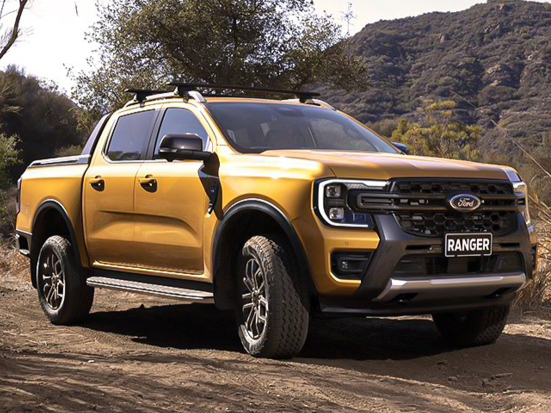
Reviewing the Ford Ranger: The Dual Advantages of Rugged Appearance and Powerful Performance
Kevin WongApr 21, 2025
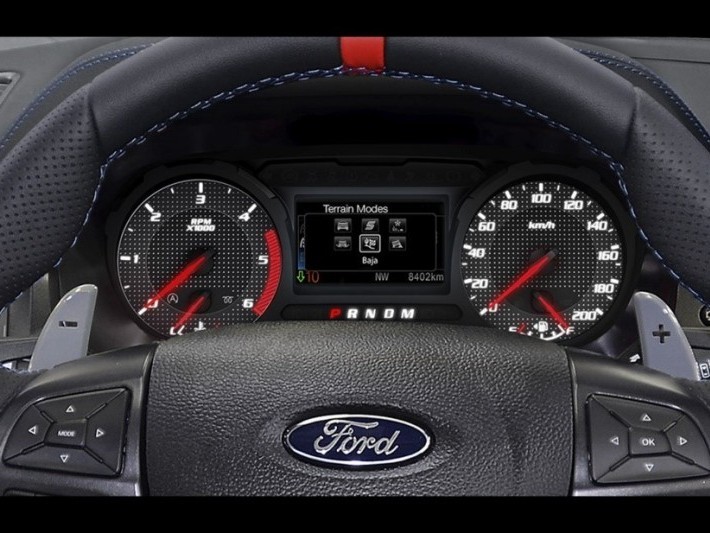
"Starting from RM 170,888! Detailed Explanation of Ford Ranger's Configuration and Performance, a Synonym for Practicality and Versatility?"
AshleySep 20, 2024
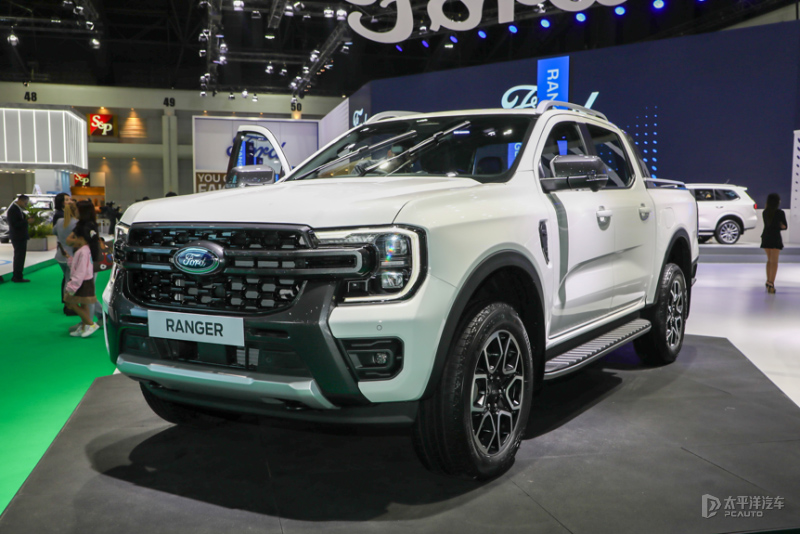
Ford Ranger: A Safe, Reliable, and Economical Choice of Pickup
LienMay 2, 2024
View More


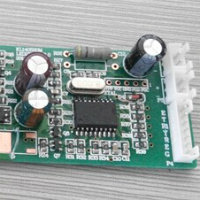






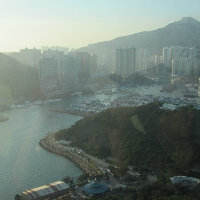

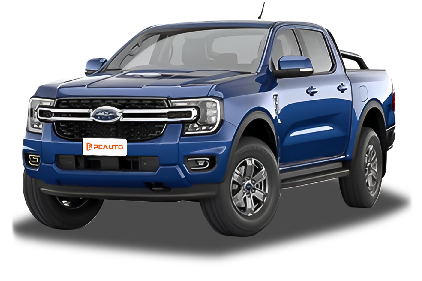




Pros
Cons